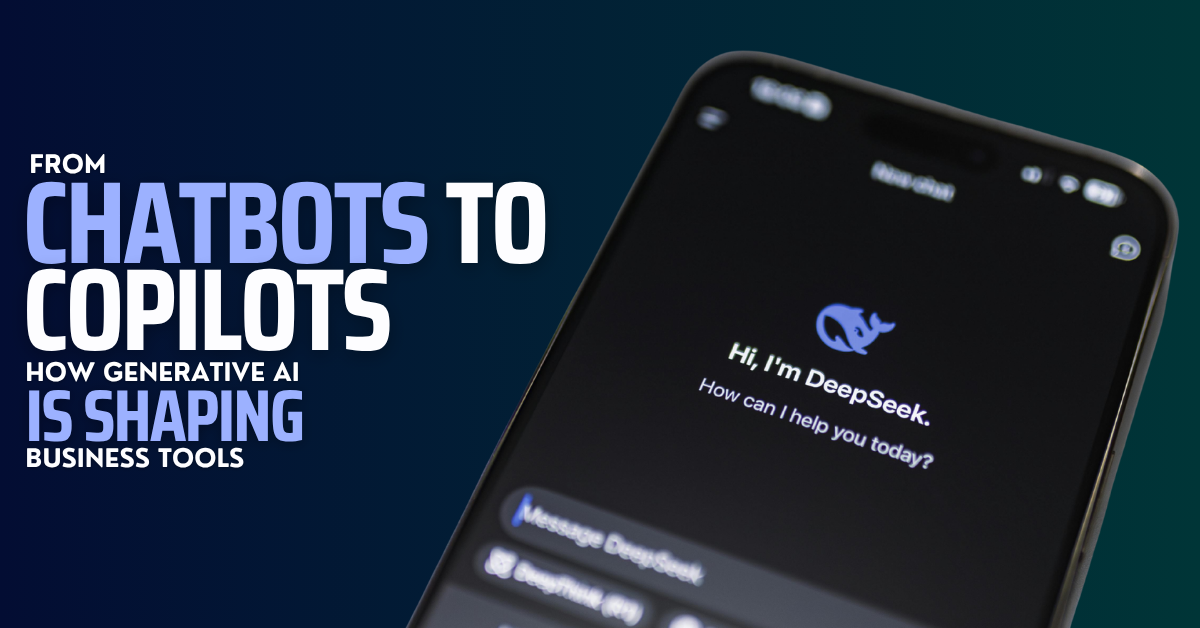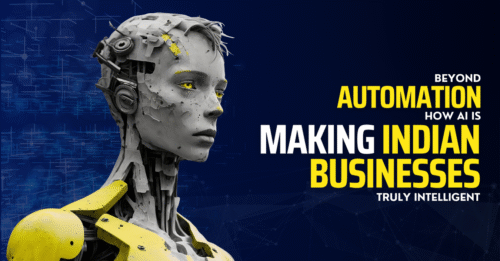In just a few years, Generative AI has evolved from a buzzword into a powerful engine behind modern business tools. What started as simple chatbots answering basic queries has now grown into AI copilots—intelligent assistants that help employees write, code, analyze, create, and even make decisions.
This shift isn’t just technical—it’s strategic. Businesses are rethinking how work gets done, and Generative AI is at the core of that transformation.
Let’s explore how we got here, what’s happening now, and what the next phase of AI-powered tools looks like.
1. The Evolution: From Bots to Business Partners
Then: AI tools were limited to rule-based chatbots or basic automation.
Now: AI copilots like Microsoft Copilot, Google Duet, and GitHub Copilot assist in real-time decision-making, writing, research, data analysis, and code generation.
⚡ Generative AI tools can now understand context, learn from usage, and work with users rather than for them.
2. Where Generative AI Is Making the Biggest Impact
| Business Function | AI Use Case |
|---|---|
| Marketing | Copywriting, ad generation, content ideas, SEO optimization |
| Sales | Lead scoring, personalized outreach, CRM insights |
| HR | Resume screening, job description writing, employee engagement analysis |
| Software Development | Code suggestions, bug fixes, documentation with tools like GitHub Copilot |
| Customer Support | Email drafts, chatbot replies, agent assist tools |
| Operations | Report generation, process optimization, predictive maintenance |
3. Real-World Examples (2025)
Microsoft Copilot is integrated into Word, Excel, Teams, and Outlook, enabling employees to summarize threads, generate emails, and analyze data with prompts.
Notion AI helps teams generate meeting notes, blog posts, and action items automatically.
Zoho Zia assists businesses with smart CRM updates, workflow triggers, and customer insights.
HubSpot AI personalizes email marketing and automates sales pipelines.
4. Benefits of Generative AI in Business Tools
✅ Time-Saving – Automates repetitive tasks and speeds up creative work
✅ Productivity Boost – Supports employees without replacing them
✅ Better Decision Making – Generates summaries, insights, and action points
✅ Scalability – One AI assistant can help hundreds of users simultaneously
✅ Accessibility – Non-technical users can now harness the power of AI with simple prompts
5. Challenges & Considerations
Accuracy: AI can still hallucinate or provide incorrect information
Data Privacy: Sensitive business data must be protected in AI workflows
User Adoption: Training and trust-building are key for employee adoption
Over-reliance: Businesses must maintain human oversight in critical decisions
6. What’s Next: 2025 and Beyond
🔮 Multi-modal Copilots: Combining text, image, video, and voice for richer interaction
🔮 Context-Aware Assistants: Understanding company-specific knowledge and tone
🔮 Industry-Specific AI Tools: Tailored copilots for healthcare, law, finance, and logistics
🔮 No-Code AI Builders: Empowering teams to create their own AI tools without dev support
Read
Conclusion
Generative AI is no longer just an upgrade—it’s a rethink of how businesses operate. From enhancing productivity to reshaping entire workflows, AI copilots are becoming essential digital team members.
The question for leaders in 2025 isn’t whether to adopt AI, but how fast and how smartly it’s done.
🚀 The future of business tools is not just smart—it’s generative.
Tags: #GenerativeAI #AICopilots #BusinessTools2025 #AIProductivity #FutureOfWork #MicrosoftCopilot #AIinBusiness #ChatbotToCopilot #AutomationTrends #EnterpriseAI
Read
Future Trends: How Generative AI Will Shape the Future Businesses







